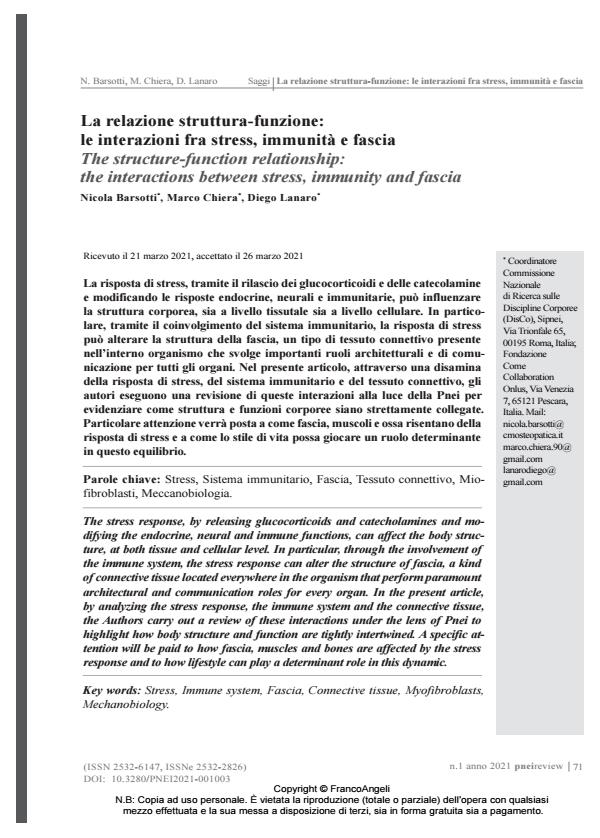La relazione struttura-funzione: le interazioni fra stress, immunità e fascia
Titolo Rivista PNEI REVIEW
Autori/Curatori Nicola Barsotti, Marco Chiera, Diego Lanaro
Anno di pubblicazione 2021 Fascicolo 2021/1
Lingua Italiano Numero pagine 14 P. 71-84 Dimensione file 1205 KB
DOI 10.3280/PNEI2021-001003
Il DOI è il codice a barre della proprietà intellettuale: per saperne di più
clicca qui
Qui sotto puoi vedere in anteprima la prima pagina di questo articolo.
Se questo articolo ti interessa, lo puoi acquistare (e scaricare in formato pdf) seguendo le facili indicazioni per acquistare il download credit. Acquista Download Credits per scaricare questo Articolo in formato PDF

FrancoAngeli è membro della Publishers International Linking Association, Inc (PILA)associazione indipendente e non profit per facilitare (attraverso i servizi tecnologici implementati da CrossRef.org) l’accesso degli studiosi ai contenuti digitali nelle pubblicazioni professionali e scientifiche
La risposta di stress, tramite il rilascio dei glucocorticoidi e delle catecolamine e modificando le risposte endocrine, neurali e immunitarie, può influenzare la struttura corporea, sia a livello tissutale sia a livello cellulare. In particolare, tramite il coinvolgimento del sistema immunitario, la risposta di stress può alterare la struttura della fascia, un tipo di tessuto connettivo presente nell’interno organismo che svolge importanti ruoli architetturali e di comunicazione per tutti gli organi. Nel presente articolo, attraverso una disamina della risposta di stress, del sistema immunitario e del tessuto connettivo, gli autori eseguono una revisione di queste interazioni alla luce della Pnei per evidenziare come struttura e funzioni corporee siano strettamente collegate. Particolare attenzione verrà posta a come fascia, muscoli e ossa risentano della risposta di stress e a come lo stile di vita possa giocare un ruolo determinante in questo equilibrio.
Parole chiave:Stress, Sistema immunitario, Fascia, Tessuto connettivo, Miofibroblasti, Meccanobiologia.
Nicola Barsotti, Marco Chiera, Diego Lanaro, La relazione struttura-funzione: le interazioni fra stress, immunità e fascia in "PNEI REVIEW" 1/2021, pp 71-84, DOI: 10.3280/PNEI2021-001003